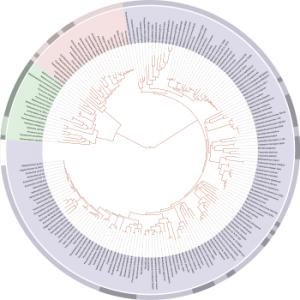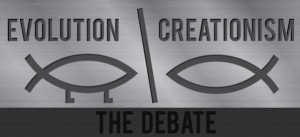Sometime ago, I briefly touched on the why I felt the concept of a meme didn’t help us understand some apparent human (and nonhuman) predispositions for violence. I don’t think my concerns about the idea that memes are analogs to genes – both being replicators that undergo a selective process, resulting in what one might call evolution by natural selection – were done full justice there. Specifically, I only scratched the surface of one issue, without explicitly getting down to the deeper, theoretical concerns with the ‘memes-as-replicators’ idea. As far I can see at the moment, memetics proves to be too underspecified in many key regards to profitably help us understand human cognition and behavior. By extension, the concept of cultural group selection faces many of the same challenges. None of what I’m about to say discredits the notion that people can often end up with similar ideas in their heads: I didn’t think up the concepts of evolution by natural selection, genes, or memes, yet here I am discussing them (with people who will presumably understand them to some degree as well). The point is that those ideas probably didn’t end up in our heads because the ideas themselves were good replicators.
Good luck drawing the meme version of the tree of life.
The first of these conceptual issues concerns the problem of discreteness. This is the basic question of what are the particulate units of inheritance that are being replicated? Let’s use the example provided by Wikipedia:
A meme has no given size. Susan Blackmore writes that melodies from Beethoven’s symphonies are commonly used to illustrate the difficulty involved in delimiting memes as discrete units. She notes that while the first four notes of Beethoven’s Fifth Symphony form a meme widely replicated as an independent unit, one can regard the entire symphony as a single meme as well.
So, are those first four notes to be regarded an independent meme or part of a larger meme? The answer, unhelpfully, seems to be, “yes”. To see why this answer is unhelpful, consider a biological context:organisms are collections of traits, traits are collections of proteins, proteins are coded for by genes, and genes are made up of alleles. By contrast, this post (a meme) is made up of paragraphs (memes), which are made up of sentences (memes), which are made up of words (memes), which are made up of letters (memes), all of which are intended to express abstract ideas (also memes). In the biological sense, then, the units of heredity (alleles/genes) can be conceived of and spoken about in a distinct manner from their products (proteins, traits, and organisms). The memetics sense, blurs this distinction; the hypothetical units of heredity (memes) are the same as their products (memes), and can broken down into effectively-limitless combinations (words, letters, notes, songs, speeches, cultures, etc). If the definition of a meme can be applied to accommodate almost anything, it adds nothing to our understanding of ideas.
This definitional obscurity has other conceptual downsides as well that begin to tip the idea that ‘memes replicate‘ into the realm of unfalsifiability. Let’s return to the biological domain: here, two organisms can have identical sets of genes, yet display different phenotypes, as their genetic relatedness is a separate concept from their phenotypic relatedness. The reverse can also hold: two organisms can have phenotypically similar traits – like wings – despite not inheriting that trait from a genetic common ancestor (think bats and pigeons). What these examples tell us is that phenotypic resemblance – or lack thereof – is not necessarily a good cue for determining biological relatedness. In the case of memes, there is no such conceptual dividing line using parallel concepts: the phenotype of a meme is its genotype. This makes it very difficult to do things like measure relatedness between memes or determine if they have a common ancestor. To make this example more concrete, imagine you have come up with a great idea (or a truly terrible one; the example works regardless of quality). When you share this idea with your friend, your friend appears stunned, for just the other day they had precisely the same idea.
Assuming both of you have identical copies of this idea in your respective heads, does it make sense to call one idea a replication of the other? It would seem not. Though they might resemble one another in every regard, one is not the offspring of another. To shift the example back to biology, were a scientist to create a perfect clone of you, that clone would not be a copy of you by descent; you would not share any common ancestors, despite your similarities. The conceptualization of memes appears to blur this distinction, as there is currently no way of separating out descent from a common ancestor from separate creation events in regards to ideas. Without this distinction, the potential application of natural selection to memes is weakened substantially. One could make the argument that memes, like adaptations, are too improbably organized to arise spontaneously, which would imply they represent replications with mutations/modifications, rather than independent creation events. That argument would be deficient on at least two counts.
One case in which there is a real controversy.
The first problem with that potential counterargument is that there are two competing accounts for special design: evolution and creationism. In the case of biology, that debate is (or at least ought to be) largely over. In the case of memes, however, the creationism side has a lot going for it; not in the supernatural-sense, mind you, but rather in the information-processing sense. Our minds are not passive receptors for sensory information, attempting to bring perceptions from ‘out there’ inside; they actively process incoming information, structuring it in predictable ways to create our subjective experience of the world (Michael Mills has an excellent post on that point). Brains are designed to organize and represent incoming information in particular ways and, importantly, this organization is often not recoverable from the information itself. There is nothing about certain wavelengths of light that would lead to their automatic perception as “green” or “red”, and nothing intrinsic about speech that makes it grammatical. This would imply that at least some memes (like grammatical rules) need to be created in a more or less de novo fashion; others need to be given meaning not found in the information itself: while a parrot can be taught to repeat certain phrases, it is unlikely that the phrases trigger the same set of representations inside the parrot’s head as they do in ours.
The second response to the potential rebuttal concerns the design features of memes more generally, and again returns us to their definitional obscurity. Biological replicators which create more copies of themselves become more numerous, relative to replicators that do a worse job; that much is a tautology. The question of interest is how they manage to do so. There are scores of adaptive problems that need to be successfully solved for biological organisms to reproduce. When we look for evidence of special design, we are looking for evidence of adaptations designed to solve those kinds of problems. To do so requires (a) the identification of an adaptive problem, (b) a trait that solves the problem, and (c) an account of how it does does so. As the basic structure of memes has not been formally laid out, it becomes impossible to pick out evidence of memetic design features that came to be because they solved particular adaptive problems. I’m not even sure whether proper adaptive problems faced by memes specifically, and not adaptive problems faced by their host organism, have even been articulated.
One final fanciful example that highlights both these points is the human ability to (occasionally) comprehend scrambled words with ease:
I cdn’uolt blveiee taht I cluod aulaclty uesdnatnrd waht I was rdanieg: the phaonmneel pweor of the hmuan mnid. Aoccdrnig to a rseearch taem at Cmabrigde Uinervtisy, it deosn’t mttaer in waht oredr the ltteers in a wrod are, the olny iprmoatnt tihng is taht the frist and lsat ltteer be in the rghit pclae.
In the above passage, what is causing some particular meme (the word ‘taht’) to be transformed into a different meme (the word ‘that’)? Is there some design feature of the word “that” which is particularly good at modifying other memes to make copies of itself? Probably not, since no one read “cluod” in the above passage as “that”. Perhaps the meme ‘taht’ is actually composed of 4 different memes, ‘t’, ‘a’, ‘h’, and ‘t’, which have some affinity for each other. Then again, probably not, since I doubt non-English speakers would spontaneously turn the four into the word ‘that’. The larger points here are that (a) our minds are not passive recipients of information, but rather activity represent and create it, and (b) if one cannot speak meaningfully about different features of memes (like design features, or heritable units) beyond, “I know it when I see it”, the enterprise of discussing memes seems to more closely resemble a post hoc fitting of any observed set of data to the theory, rather than the theory driving predictions about unknown data. 
“Oh, it’ll fit alright…”
All of this isn’t to say that memetics will forever be useless in furthering our understanding of how ideas are shaped and spread but, in order to be useful, a number of key concepts would need to be deeply clarified at a minimum. A similar analysis applies to other similar types of explanations, such as cultural ones: it’s beyond doubt that local conditions – like cultures and ideas – can shape behavior. The key issue, however, is not noting that these things can have effects, but rather developing theories that deliver testable predictions about the ways in which those effects are realized. Adaptationism and evolution by natural selection fit the bill well, and in that respect I would praise memetics: it recognizes the potential power of such an approach. The problem, however, lies in the execution. If these biological theories are used loosely to the point of metaphor, their conceptual power to guide research wanes substantially.


